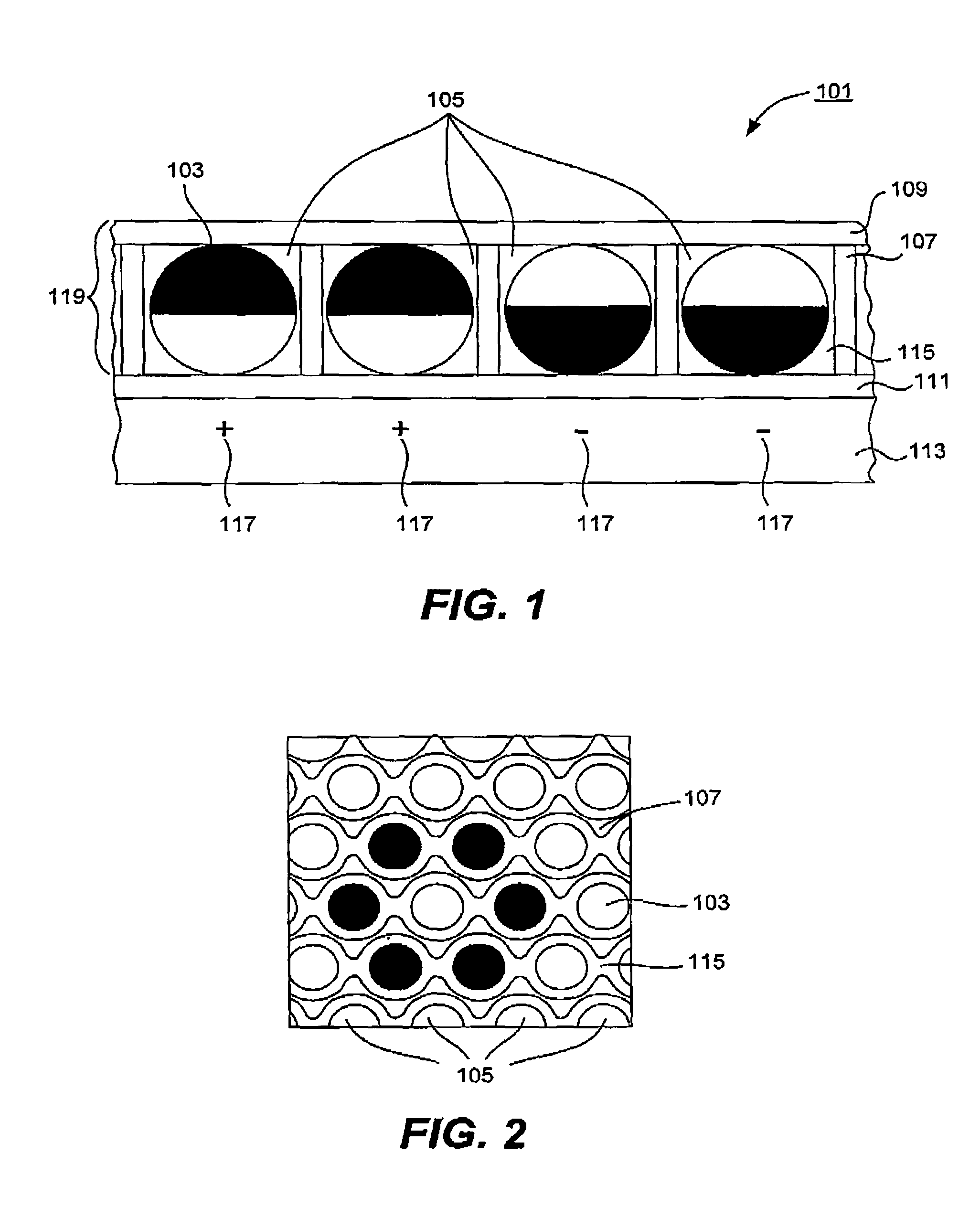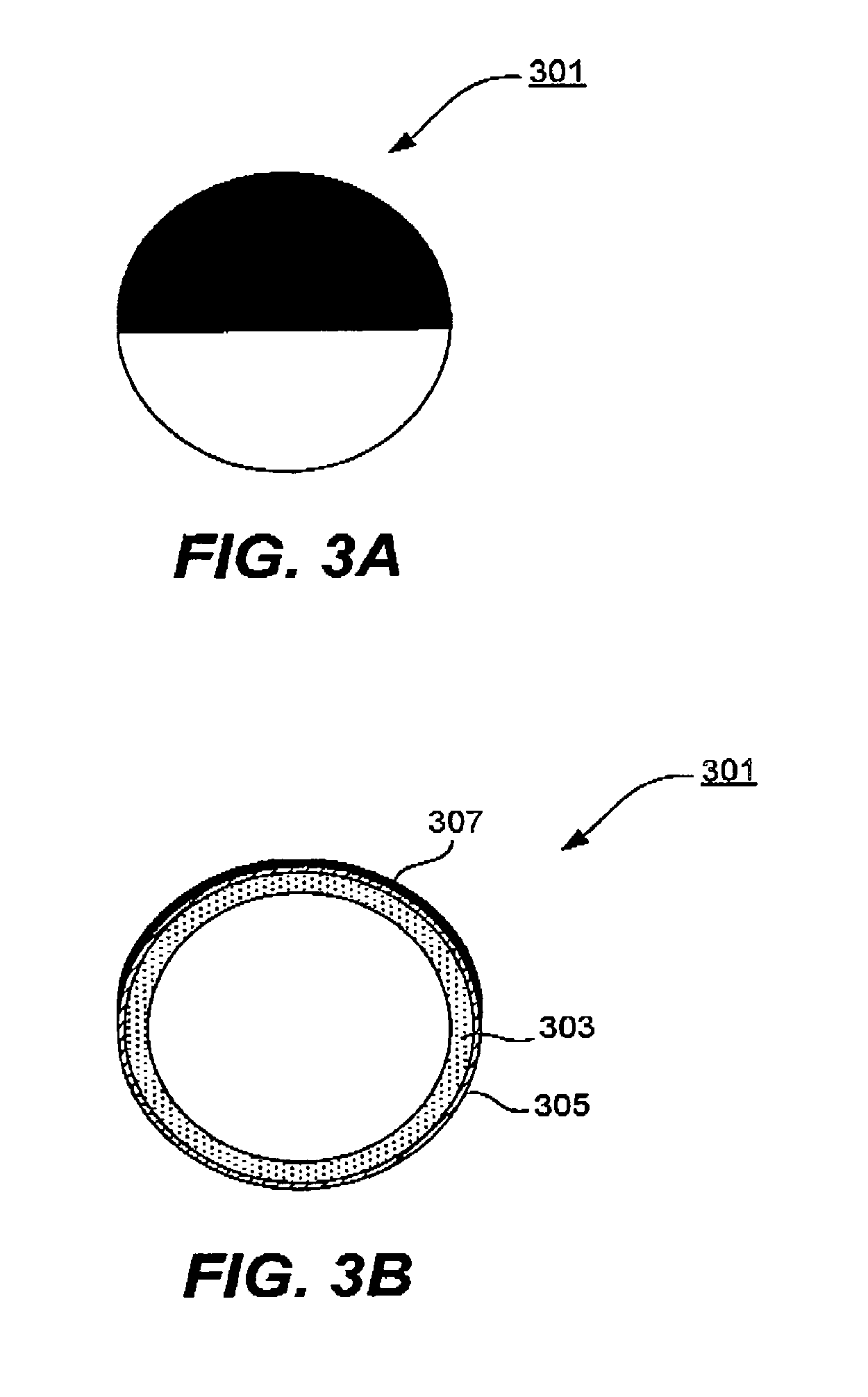Electro-optic display
a display and optical technology, applied in the field of visual displays, can solve the problems of flickering of the display, consequent eye strain of the viewer, and the inability of the gyricon technology to produce image quality comparable to that of images printed on paper, and achieve the effects of reducing the aspect ratio, good fill factor, and structural stability
- Summary
- Abstract
- Description
- Claims
- Application Information
AI Technical Summary
Benefits of technology
Problems solved by technology
Method used
Image
Examples
Embodiment Construction
[0061]Introduction and Overview
[0062]Electro-optic displays of present invention may possess a number of advantageous characteristics that may compare favorably to gyricon electronic paper. These displays may provide high brightness and contrast images (due, for example, to specific properties of the matrix). They also may possess high resolution due to, for example, small pixel size. Further, the displays of present invention may be manufactured from environmentally robust materials, resulting in environmentally stable displays (e.g., displays withstanding high temperature and high humidity conditions). The design of these displays allows for easy display manufacturing, making use, in certain embodiments of a channel in the matrix during display assembly. Display assembly methods are also provided in some aspects of present invention.
[0063]The simplicity of electro-optic displays provided by this invention minimizes the number of components, and thus cost of display manufacturing. ...
PUM
| Property | Measurement | Unit |
|---|---|---|
| white reflectance | aaaaa | aaaaa |
| diameter | aaaaa | aaaaa |
| diameter | aaaaa | aaaaa |
Abstract
Description
Claims
Application Information
 Login to View More
Login to View More - R&D
- Intellectual Property
- Life Sciences
- Materials
- Tech Scout
- Unparalleled Data Quality
- Higher Quality Content
- 60% Fewer Hallucinations
Browse by: Latest US Patents, China's latest patents, Technical Efficacy Thesaurus, Application Domain, Technology Topic, Popular Technical Reports.
© 2025 PatSnap. All rights reserved.Legal|Privacy policy|Modern Slavery Act Transparency Statement|Sitemap|About US| Contact US: help@patsnap.com



